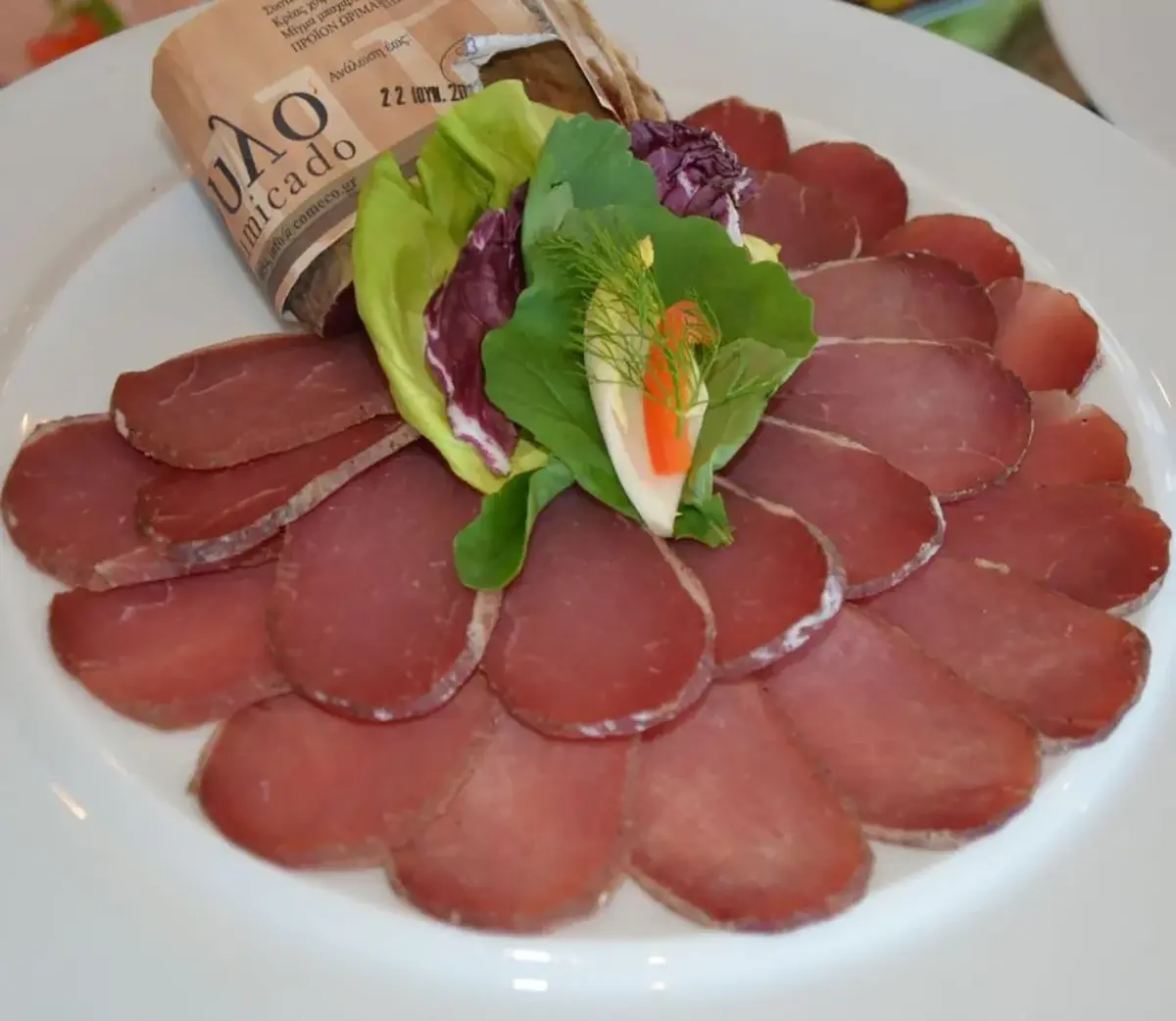The Corfiot noumboulo is one of the most traditional and distinctive cured meats of Corfu, closely linked to the history and gastronomic heritage of the island. It is a product with deep roots in local tradition, which has preserved its authenticity to this day, as well as the unique flavor that makes it special not only in Greece but also on a broader international level. The history of noumboulo and its preparation process testify to the craftsmanship and passion of Corfiot producers, as well as their close relationship with local raw materials and the island’s conditions.
The history of noumboulo begins from the period of Venetian presence in Corfu (1386–1797), when cured meats played an important role in the storage and preservation of meat, especially on an island where the availability of fresh meat was seasonal. The Venetians brought to Corfu knowledge and techniques related to the preparation of cured meats, significantly influencing local production. From this period also comes the use of specific spices and curing methods that make noumboulo distinct. It is worth noting that similar cured meats are made in other parts of Italy, such as “coppa” and “capocollo,” but Corfiot noumboulo has its own uniqueness, thanks to the microclimate, local pig breeds, and traditional techniques.
Corfiot noumboulo is made from pieces of pork, mainly from the neck or the thigh, which are known for their balance of fat and muscle tissue. This balance is critical because the fat adds flavor and softness, while the meat provides texture and body to the final product. The meat is cut into slices or cubes, depending on the technique used by the producer, and then carefully salted. Salt is a key ingredient for preservation and for extracting moisture from the meat so that the curing process can begin.
After salting, the meat is marinated with spices that vary depending on the family recipe and the region. The most common spices are black pepper, garlic, coriander, cinnamon, and clove, while red pepper is often added for a subtle spicy note. These aromas blend harmoniously with the natural flavor of the meat, giving noumboulo its characteristic profile. The mixture is then placed inside natural pig or lamb intestines, which are meticulously cleaned and serve as the natural casing of the cured meat. The choice of casing is also important for the final texture and the breathing of the product during curing. After filling, the noumboulo is tightly tied with string to maintain its shape and allow for even curing.
The curing of noumboulo takes place in specially designed spaces with controlled temperature and humidity, conditions that favor slow dehydration and the development of aromas. The duration of curing varies depending on the size of the product and the desired intensity of flavor, usually ranging from 2 to 4 months. During this period, the cured meat loses moisture and gradually acquires its characteristic dense texture and intense aroma. Careful monitoring of the process by producers is necessary to avoid excessive drying or the development of unwanted microorganisms.
Alongside natural curing, some traditional recipes also use smoking, which adds additional aromatic notes and contributes to better preservation of the product. Smoking is done with wood from local trees, such as oak or linden, which impart delicate smoky notes without overpowering the natural flavor of the meat.
The final product presents a deep red color with light pink hues, while its surface may have a thin layer of natural oils and spices. The flavor of noumboulo is intense but balanced, with sweet and spicy tones, while its texture is tender and slightly fatty, making it ideal to accompany bread, cheeses, or even to be incorporated into traditional dishes.
The tradition of noumboulo production is mainly maintained by small family units and local producers who faithfully follow traditional methods, without yielding to mass industrial processes. This ensures the high quality and authenticity of the product, but at the same time creates a form of cultural continuity, as each producer passes down from generation to generation their own secret recipes and techniques.
Today’s demand for Corfiot noumboulo is not limited to the local market. The product has gained a reputation throughout Greece and abroad, especially in countries where there is strong interest in gastronomic traditions and quality local products. Noumboulo has become a characteristic example of Corfiot cuisine, highlighting the rich cultural heritage of the island and attracting visitors who want to experience through taste the history and culture of Corfu.
At the same time, the modern trend of returning to traditional and natural products has given new impetus to noumboulo production, with new producers experimenting with small improvements in preparation, always with respect for the roots and authenticity of the cured meat. The preservation of traditional recipes combined with the creativity of modern producers forms the basis for the long-term success and recognition of Corfiot noumboulo as one of Greece’s top cured meats.






Comments are closed